
Thursday, November 11, 2010
Wednesday, October 13, 2010
Monday, October 11, 2010
Sunday, October 10, 2010
Thursday, June 10, 2010
Tuesday, April 13, 2010
2010 Kawasaki Ninja ZX-10R

Kawasaki Ninja ZX-10R

Kawasaki Ninja ZX-10R

Kawasaki Ninja ZX-10R

Kawasaki Ninja ZX-10R
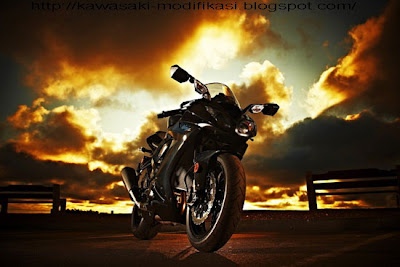
Kawasaki Ninja ZX-10R
* Aggressive new styling of the upper, side and center fairings and cockpit inner covers enhances aerodynamic efficiency and appearance
* Refinements to the shift ratchet assembly, shifting arm, return spring and collar result in reduced friction and less movement at the shift shaft pivot, for improved shifting feel and more positive gear changes
* A new, embossed metallic gray coating on the muffler complements the new bodywork
* A new, 18-position Öhlins steering damper uses additional spring and oil pistons for improved action; titanium color and a laser-etched logo enhance the bike's appearance
* Slightly longer throttle cables
inside a plastic throttle housing provide improved throttle action for even greater control
Four-Cylinder, DOHC 998cc Engine
* Very compact, narrow and lightweight design makes it possible to position the engine perfectly within the chassis for optimal weight distribution
* One-piece upper crankcase and cylinder casting saves weight and offers maximum rigidity
* Oil is routed through channels milled into the cases on various parts of the engine, eliminating external oil lines and reducing weight
* Stacked, triangular layout of crank axis, input shaft and output shaft reduces engine length and aids mass centralization for quick handling
* Lightweight crankshaft maintains the same inertial moment as a heavier design but saves about two pounds compared to a conventional crank
* Low friction oil pump reduction ratio reduces parasitic power loss
* Water pump uses the same type impeller as the Kawasaki Ninja ZX-14, with pump rpm optimized for reduced friction
* A lightweight Denso radiator with tightly packed cores provides the most efficient engine cooling possible
* Specially designed internal fins on the liquid-cooled, aluminum oil cooler promote high-efficiency heat dissipation
Cylinder Head
* Intake ports, exhaust ports and matched combustion chambers are designed for optimum flow efficiency and high top-end power
* Exhaust ports that are narrower at the midpoint and larger at the opening promote high exhaust velocity and efficient scavenging
* Intake and exhaust valves are titanium for reduced reciprocating weight and higher rpm capabilities
* High-lift camshafts are designed to deliver more power at high rpm and make it easier to tune the engine for racing
Fuel Injection
* Secondary fuel injectors improve top-end power output and power characteristics at high rpm. Lower injectors are always on, upper injectors come on as needed according to degree of throttle opening and engine rpm
* Oval cross-sectioned throttle bodies allow very precise throttle control and instant response
Air Intake
* A highly efficient, center-located Ram Air intake duct is shaped for lower intake noise and higher intake efficiency
* Use of a compact, flat-type fuel pump that takes up less fuel tank space leaves room for a large, efficient airbox
* Oval-section intake funnels promote non-turbulent flow at all rpm
KIMS Ignition
* Kawasaki Ignition Management System (KIMS) helps curtail sudden spikes in engine speed, enhancing the rider's control of power delivery
* In addition to standard fuel injection system inputs (engine speed, throttle position, vehicle speed, gear position, intake air temperature, intake air pressure, engine temperature and O2 sensors), KIMS monitors the rate of rpm change every 0.02 seconds
* Designed not to interfere with the rider's intentions, the complex ECU program assumes all rider inputs are intentional. However, when a change in engine speed exceeds the predicted response for given parameters, KIMS will slow the ignition timing to reduce power
* Adjustment of KIMS parameters is possible with an accessory racing (circuit-use only) kit installed
Exhaust System
* An exhaust pre-chamber under the engine reduces exhaust noise, minimizes silencer volume and enhances mass centralization for maximum flickability
* A palladium catalyzer helps the ZX-10R meet strict Euro-III exhaust emissions standards
* A single orthogonal, titanium silencer with a new, black finish keeps the center of gravity low and improves exhaust efficiency
Six-Speed Transmission
* Modifications to the shift mechanism further enhance quick, positive gear changes
* Gear ratios suit the power characteristics for ideal power delivery in all rpm ranges
* Final reduction ratio of 17/41 intensifies the ZX-10R's already awe-inspiring acceleration
* An adjustable back-torque limiting clutch facilitates smooth downshifts, a main contributor to stability under heavy braking
Chassis
* Unique twin-spar aluminum frame features an optimized stiffness balance through a mixture of materials, shapes and thicknesses for superior handling and bump absorption
* Ribbing on the interior of the pivot plate where it joins the frame's upper cross member slightly slows down the frame's feedback for highly accurate steering feel
* Swingarm pivot located to aid with the front-rear weight balance
* Lightweight, two-piece, aluminum die-cast sub-frame is mounted to the frame's upper cross member, so rear suspension feedback is transmitted more directly to the rider
* Narrow sub-frame layout contributes to the compact and slim tail section
Swingarm
* A pressed-beam swingarm delivers a level of feel and feedback unobtainable with a cast unit
* A top-mounted swingarm brace contributes to the superb high-speed stability of the chassis
Suspension
* DLC (Diamond-like Carbon) fork tube coating on the fully adjustable 43mm inverted fork sliders improves fork action by providing reduced friction, smoother action and better road holding
* Bottom-mounted springs are completely submerged in oil for reduced frothing, improved damping performance, superior fork action and road-following ability
* A four-way adjustable rear shock features dual (low- and high-speed) compression damping as well as rebound damping and spring preload adjustment - allowing the fine tuning required for racing
* Kawasaki Genuine Accessory shims are available for quick rear ride height changes at the track
Race-quality Steering Damper
* A new 18-position adjustable Öhlins steering damper is fitted as standard equipment to help ensure stable front end feedback even under racing conditions
Brakes
* Tokico radial-mount brake calipers use dual pads for superb initial bite, increased control and progressive feel
* A radial-pump front master cylinder provides the ultimate in front brake feel and feedback
* A pair of 5.5mm thick, 310mm petal discs provides the heat dissipation needed to maintain brake feel and responsiveness during extended heavy use
* A 220mm rear petal disc gripped by a single-piston caliper provides excellent feel and feedback
Wheels
* Squeeze-cast wheels offer precise dimensions with less wall thickness and weight, yet are stiffer than gravity-cast units
Ergonomics
* The Kawasaki NinjaZX-10R's rear frame, tank and seat offer high levels of contact with the bike and provide the rider very accurate feedback regarding chassis performance and road surface
* A flared fuel tank top makes it easier for riders to rest the inside of their arm on the tank when leaning into a turn for increased comfort and enhanced feedback
* Narrow in the front and shorter, front to back, for a slimmer riding position, the seat offers a shorter reach to the pavement and excellent chassis feedback
* A rib on the end of throttle tube, under the grip, improves grip and feel
Aerodynamic Bodywork
* Slimmer than ever in new aerodynamic bodywork, the Kawasaki Ninja ZX-10R is designed to slice through the atmosphere cleanly at high speed with minimal turbulence
* The front fender aids cooling efficiency by directing air toward the radiator
* A recess on the top of the fuel tank accommodates the helmet's chin, so it's easier to tuck-in behind the windscreen at speed
* High mounting position of mirrors, with integrated turn signals, provides excellent rearward visibility and helps to minimize damage if the bike falls over
* The flush surface of the tail's underside reduces turbulence at the rear of the bike and ensures laminar airflow around the seat
* A large, rear inner fender keeps the bike cleaner and allows the mud flap to be smaller and less obtrusive, further improving aerodynamic qualities around the rear of the machine
* Mirrors, license plate holder and rear turn signals are easily removable for track day prep
* An LED tail light makes the bike more visible to drivers and provides the final styling flourish to the evocative Ninja design
Advanced Electronic Instrumentation
* The easy-to-read instrument cluster uses UV-blocking glass, for maximum visibility
* Multifunction odometer, tripmeter, clock and lap timer/stopwatch are all intuitively easy to use
* The ZX-10R's big tachometer "green zone" makes keeping the engine in the meatiest part of its massive powerband even easier
Open class sportbikes are all about power, and the 2010 Kawasaki Ninja® ZX™-10R continues to set the pace, on track and off. The formula is simple, but the execution is critical: The ZX-10R offers tremendous horsepower, but delivers it with refined controllability through a highly evolved aluminum frame rolling on top-shelf components developed on the track and refined for the street.
The 10R returns with a host of refinements for 2010. New more aerodynamic bodywork is designed to slice through the atmosphere cleanly at speed, and to look even better doing it. A new fairing with a stronger family resemblance to its ZX-6R sibling leads the way for the rest of the minimalist new plastic, and a new, dark gray embossed coating on the bike’s titanium muffler carries the light, slick theme rearward. Inside the cockpit, new inner covers reflect the high quality and performance of the rest of the ZX-10R package.
All that power needs to be kept in check, of course, and rider feedback has led to the fitment of a new, premium 18-position Öhlins steering damper. The new damper uses sophisticated internal circuitry, including pistons and springs, to keep the Ninja tracking straight and true under the most challenging conditions.
2010 Kawasaki Ninja ZX-10R Technology
Overview
MAXIMUM RIDER EXCITEMENT
Designed to offer a high-level base package with the stock engine and chassis performance to satisfy even professional racers, the already potent Ninja ZX-10R receives some fine-tuning and a revised styling package for 2010.
To maximize rider excitement on the circuit, the Ninja ZX-10R offers the following qualities:
High-powered Engine
Delivering 192 PS with Ram Air and a super-wide powerband, the Ninja ZX-10R’s engine has a performance potential similar to Kawasaki factory superbike race machines.
Precise Engine Control
Engine settings and advanced technology like KIMS result in a silky smooth throttle response, ensuring a superb relationship between the rider’s wrist and the rear wheel. Power delivery is seamless and linear, facilitating control, yet the Ninja ZX-10R’s exhilarating engine feel, especially at high-rpm, is sure to have riders grinning in their helmets.
Flickable Handling
Highly responsive to rider input, the Ninja ZX-10R turns almost as quickly as a 600cc class machine. Confidence-inspiring front end, mid-corner stability, as well as the performance, control and feel offered by Kawasaki’s triple petal disc brake package all contribute to cornering pleasure.
Superb Rider Feedback
The combination of an ultra-high feedback chassis and tactile ergonomics result in a highly communicative package that enables the two-way dialog between man and machine that is required to ride at the highest level. The main frame, rear frame and swingarm were designed to transmit information to the rider. Ergonomics, especially the tank and seat, maximize the rider’s contact with the bike. The handlebar/seat/pegs relationship offers a naturally aggressive riding position, ideal for riding on the track.
Other Winning Features
Adding to the Ninja ZX-10R’s potent circuit potential are features like its highly acclaimed back-torque limiter and highly visible instrument cluster. For 2010, the 10R receives a new-design Öhlins steering damper, and revisions to the transmission shift mechanism offer improved shift touch.
Sharper New Styling
New front cowl gives the Ninja ZX-10R a stronger family resemblance to its smaller sibling, the Ninja ZX-6R. Revisions to the minimalist bodywork and a new muffler design contribute to a lighter looking appearance.
Imbued with technology tried and tested on Kawasaki racers, the Ninja ZX-10R shines on the track, especially on fast, flowing circuits. Although designed to offer maximum rider excitement on the circuit, the same qualities that enable its high circuit performance make it fun for sport riding on the street.
Engine
HIGH-POWERED ENGINE Dual injection
• Secondary fuel injectors contribute to top-end power output and power characteristics in the high-rpm range. While the lower injectors operate all the time, operation of the upstream injectors is determined by the degree of throttle opening and engine rpm.
Ram Air / Airbox
• The highly efficient, centrally mounted Ram Air intake duct was designed to reduce intake noise and improve intake efficiency. A passageway through the frame routes intake air from the Ram Air duct to either side of the steering head, giving the air a straight and very efficient path to the airbox.
• Large-volume airbox was possible thanks in part to a flat-type fuel pump (also used on the Ninja ZX-6R), which allowed fuel tank capacity to be maintained despite the additional space required for the secondary injectors.
• Oval intake funnels (velocity stacks) contribute to flow efficiency.
Cylinder head
• Exhaust port shape designed for flow efficiency. This, and matching combustion chambers contribute to the high top-end power.
• Both intake and exhaust valves are titanium, reducing reciprocating weight.
• High-lift cams deliver more power at high rpm and make it easier to tune the engine for racing.
Exhaust system
• Efficient exhaust system arrangement with pre-chamber and single right-side silencer contributes to the engine’s high power output.
2010 Kawasaki Ninja ZX-14

Kawasaki Ninja ZX-14

Kawasaki Ninja ZX-14

Kawasaki Ninja ZX-14

Kawasaki Ninja ZX-14

Kawasaki Ninja ZX-14
The mission of Kawasaki’s flagship Ninja® ZX™-14 is not unlike that of an exotic supercar
— to project the awesome power and technology of its parent company in rapid fashion, every time the throttle is twisted. It may not cost a million dollars or have a V-12 engine, but the ZX-14’s 1352cc fuel-injected inline-four is the closest thing on two wheels. Its monocoque chassis and wind-tunnel developed body represent the cutting edge of sportbike design. The ZX-14’s systems are designed to allow riders to exploit the full potential of man and machine, while effortlessly dispatching all challengers.
Despite ever-tightening noise and emissions regulations; the ZX-14 has continued to set the pace of sportbike excellence ever since its domineering debut. Intake and exhaust systems permit it to comply with strict emissions and noise regulations, even as its massive low-end torque, mid-range thrust and legendary Ninja peak power place it at the top of the sportbike food chain.
Secondary air ports in the cylinder head and its cover flow clean air into the exhaust system and boost the efficiency of the three honeycomb catalyzers employed in the exhaust system. These devices, combined with a wide dispersal of atomized fuel from the fine-atomizing fuel injectors and optimized flow characteristics through the intakes, allow the ZX-14’s 1352cc engine to offer strong performance, yet still meet the toughest motorcycle emissions regulations.
In lieu of a more-restrictive exhaust system, the Ninja ZX-14 meets noise standards by producing minimal internal mechanical noise. A special piston profile and a urethane insulation sheet on the inside of the magnesium chain cover help quiet the engine and permit a freer flowing exhaust for greater power.
Kawasaki Ninja ZX-14’s chassis design is every bit the equal of its power plant. Using an advanced version of Kawasaki’s unique aluminum monocoque design, its frame is lightweight and very strong. Die cast aluminum sections on the main frame make for lighter parts, keeping the weight down even more on the slim and compact frame.
The narrow engine, monocoque frame, and fuel tank provide a slim rider interface and a relaxed sport riding position. It is compact without being cramped, with its easy-to-reach bar position, low-set footpegs for ample legroom and a low seat height and narrow seat front to easily plant both feet on the ground when stopped. Comfort levels are high enough to cause riders to think they’re on a dedicated sport tourer — until the Ninja ZX-14’s throttle is twisted. When that happens, all confusion disappears, like so many competitors in the rear view mirrors.
Uninterrupted fairing lines give the Kawasaki Ninja ZX-14 a smooth, flowing appearance from front to rear, due in part to the monocoque frame, which goes over the engine and doesn’t protrude through the cowling. Quadruple projector beam headlights adorn the Kawasaki Ninja ZX-14’s front fairing, immediately beneath its menacing ram air intake duct. The turn signals are cleanly integrated into the fairing and rear cowl, with a unique “V” design LED tail lamp capping off a sleek, aerodynamic package that reinforces Kawasaki’s aircraft heritage.
The Ninja ZX-14’s blend of power, handling and style perfectly illustrates the potent technological know-how of Kawasaki’s highly-trained engineers.
Authentic Kawasaki Accessories are available through Kawasaki dealers.
Monday, April 12, 2010
Ducati Hypermotard 796 Motorcycle in 2010
Ducati Hypermotard 796 in 2010
Ducati Hypermotard 796 Motorcycle is one of the motorcycle design to be launched by the year 2010.Pada Ducati Hypermotard Ducati 796 Motorcycle engines produced this very large at around 80-90 hp. If you like speed you can try Ducati Hypermotard 796 but of course you have a high cost to get it. Ducati Hypermotard 796 sold around 10,000 dollars.
Saturday, April 10, 2010
Sky Wave 650 Type S

Sky Wave 650 Type S

Sky Wave 650 Type S

Sky Wave 650 Type S
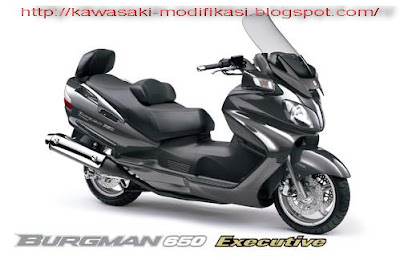
Sky Wave 650 Type S

Sky Wave 650 Type S
In 2005 Suzuki created the Skywave 650 LX, which is a Twin 638.00 ccm (38,74 cubic inches) beautiful motorcycle that we will now get to know better by examining its characteristics in further detail.
Over the next few lines Motorbike Specifications will provide you with a complete list of the available Suzuki Skywave 650 LX technical specifications, such as engine type, horsepower, torque, top speed, compression rates, tyre dimensions and many others, so here it goes:
Our current motorbike’s database contains full comprehensive information of around 15.000 different motorbikes for near 150 brands; we have data for models since 1970, so it’s basically “you name it, we have it“.
Feel free to browse around our categories and tags, or search for the specific model you’re looking for, we’re quite sure you’ll be able to find in here what you’ve been looking for.
If you want to get automatic updates on every new model we publish, remember to bookmark us and subscribe to the Motorbike Specifications Feeds.
Suzuki Skywave 650 LX Technical Specifications
* Brand: Suzuki
* Model: Skywave 650 LX
* Production Year: 2005
* Category (Type of Bike): Scooter
* Engine Size: 638.00 ccm (38,74 cubic inches)
* Engine Type: Twin
* Engine Horsepower: 49.61 HP (36.2 kW
* Compression Rates: N/A
* Stroke: 4
* Torque: 60.00 Nm (6.1 kgf-m or 44.3 ft.lbs
* Starter Type: N/A
* Top Speed: N/A
* Transmission Type: N/A
* Gearbox Type: 5 speed
* Fuel Capacity: 15.00 litres (3,94 gallons)
* Fuel Control: DOHC
* Number of Valves: N/A
* Cooling System Type: Liquid
* Weight: N/A
* Length: N/A
* Front Brakes Type: N/A
* Rear Brakes Type: N/A
* Front Tyre Dimensions: N/A
* Rear Tyre Dimensions: N/A
Friday, April 2, 2010
Kawasaki Motocross

Kawasaki Motocross
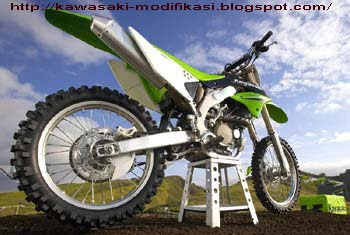
Kawasaki Motocross

Kawasaki Motocross

Kawasaki Motocross
Kawasaki motocross increasingly emphasize its quality,Rick Johnson and Mercedes Gonzales, both legends of the sport in their own right, teamed up in creating a riding school out of Irvine, California called the Motocross School of Champions. While their schools are usually men by a vast majority, both Rick and Mercedes agreed that they thought there was a special need for women. Kawasaki also felt the need to give more attention and support to female riders, so the Kawasaki Women's Motocross School of Champions was born.
Heather Lewis (Jimmy's wife) and I both received invitations to the event which took place at Lake Elsinore Motocross Park. Also on the guest list were some of the most recognizable females in the industry: Miki Keller of the WMA, Pro motocrossers Elizabeth Bash and Kadie Garrett, Former Host of Dirt Rider Adventures Molly Culver, and veteran woman motocross racer Gale Webb (a.k.a. America's Sports Mom).
At the end of the day, we had all picked up a lot. Plus, we all had a great time. Rick and Mercedes really hit it on the head when it comes to teaching girls. We learn differently; we respond to encouragement. After riding with almost entirely guys for years, even I had forgotten how important that can be. I've learned to take not getting run off the track as a sign of encouragement, and a lack of criticism as a compliment. All the "great job!" comments and high fives really made for a fun, relaxing environment (a pleasant change of pace)! Many guys don't understand a girl's constant need for comfort and encouragement, but just know that we're hard-wired that way.
"Being a woman, I understand the fears and the hesitation that women have where men don't," said Mercedes Gonzales, "Because men have the tendency to give you the tools, tell you what to do, and they're like, 'Just do it!' With women, you have to build up their confidence, and assure them that nothing's going to go wrong."
Saturday, March 27, 2010
2010 Yamaha Zuma scooter 125


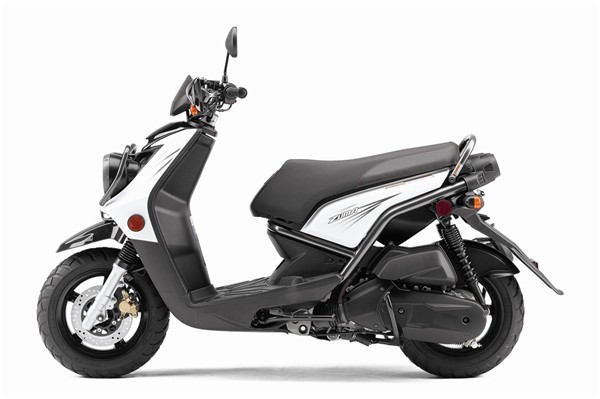
2010 Yamaha Zuma 125 Specifications :
Identification
Model Type Scooter
BASE MSRP(US) $3,190.00 Free Dealer Quote
Dealers Yamaha Dealers
Warranty 12
Insurance Get a Quote
Engine:
Engine Type Single-Cylinder
Cylinders 1
Engine Stroke 4-Stroke
Cooling Air
Valves 4
Valves Per Cylinder 4
Valve Configuration SOHC
Compression Ratio 10.0:1
Starter Electric
Fuel Requirements Regular
Fuel Type Gas
Transmission:
Transmission Type Continuously Variable (CVT)
Primary Drive (Rear Wheel) Belt
Wheels & Tires:
Front Tire (Full Spec) 120/70 R12
Rear Tire (Full Spec) 130/70 R12
Brakes:
Front Brake Type Hydraulic Disc
Rear Brake Type Drum
Technical Specifications:
Wheelbase (in/mm) 50.8 / 1290.3
Fuel Capacity (gal/l) 1.6 / 6.1
Sunday, March 7, 2010
Saturday, March 6, 2010
Thursday, March 4, 2010
BMW S1000RR Motorcycle - BLACK Monster
BMW S1000RR Motorcycle - BLACK Monster
BMW S1000RR Motorcycle is designed motorcycle and designed to can compete and compete in the Superbike Championship motorcycle racing. At BMW Motorcycle S1000RR parallel twin-engine layout and Duo-Lever front suspension in favor of a more traditional inline four-cylinder and fork format. There was also improvement and development with added many new features such as cylinder heads and konrol better traction course.
Monday, March 1, 2010
Volvo Follow The Tokyo Motor Show

Volvo, the Swedish unit of Ford Motor Co., will not participate in the Tokyo Motor Show this fall.
"We have evaluated our participation at motor shows for 2009 to see how we can make the most out of our resources, and this year we decided not to participate at Tokyo," Volvo spokeswoman Maria Bohlin said today in an e-mail.
Ford Motor Co. said earlier this week it would not participate in the show, but a spokeswoman said she could not comment on plans for Volvo or Mazda Motor Corp.
Mazda will participate in this year's show. Last year, Ford raised $540 million by cutting its stake in Mazda from 33.4 percent to just over 13 percent, but the two automakers will continue joint ventures and the sharing of vehicle platforms and powertrains.
Ford joined General Motors and Chrysler LLC in skipping the event this year. Pullouts by non-Japanese automakers and concerns raised by some Japanese automakers stemming from the global auto sales slowdown have cast doubt on whether the October 21-22 show will take place.
The Japan Automobile Manufacturers Association will decide by early next month whether to postpone the show, Toshihiro Iwatake, JAMA's executive director, told Automotive News earlier this week.
If the event is canceled, the next Tokyo Motor Show would be in 2011, Iwatake said.
Several auto companies pulled out of the Detroit auto show, which opens to the public tomorrow. The missing companies included Nissan Motor Co., Suzuki Motor Corp., Porsche AG, Rolls-Royce and Land Rover. Mitsubishi Motors Corp. canceled its corporate presence, but local Mitsubishi dealers put together an exhibit.
Some participating automakers, including federal loan recipients Chrysler LLC and General Motors, toned down their Detroit displays and built single-story exhibition stands to save money.
The Best Design Car In The Future
 First picture car in the future like that will make you say that is very imagine. This car design like capsule or the faster car in the world.
First picture car in the future like that will make you say that is very imagine. This car design like capsule or the faster car in the world.For students of the way car demand is changing — and how design will adapt — the next few years will provide some fascinating spectator sport.
Seems to me that many of the rules about how cars look and are laid out will be rewritten, even before the expected blizzard of hybrid and electric powertrains arrives.
 Second picture car in the future There are signs this week that Volvo is about to redesign its traditional V70 estate - because customers think its roof is too low - just as Renault is preparing to drop its Espace MPV because customers feel, in this new age of insecurity, that the pioneering people-carrier’s glassy, high-riding way of doing things makes them too vulnerable.
Second picture car in the future There are signs this week that Volvo is about to redesign its traditional V70 estate - because customers think its roof is too low - just as Renault is preparing to drop its Espace MPV because customers feel, in this new age of insecurity, that the pioneering people-carrier’s glassy, high-riding way of doing things makes them too vulnerable. Third picture car in the future Discovering who’s right (each company doubtless has iron-cast research to justify its point of view) will be fascinating.
Third picture car in the future Discovering who’s right (each company doubtless has iron-cast research to justify its point of view) will be fascinating.The future of car design
Other trends? Big-engined cars are obviously in trouble, now that fuel efficiency is all. That threatens formerly bulletproof premium cars.
Buyers have traditionally used their BMW purchase to justify an extra-performance engine with accompanying trimmings. BMW does perfectly good ‘cooking’ engines, of course, but it’s the pizzazz that earns them the money. If they start making a higher proportion of ordinary cars, as they surely will, the bottom line is bound to suffer.
 Fourth picture car in the future Don’t expect big-cabin cars to go into a spiral, though. Consumers keep growing, and they enjoy the comfort too much to squeeze themselves into micro-cars. Look forward instead to a renewed crop of innovations in packaging, accompanied by cheaper and more effective weight saving.
Fourth picture car in the future Don’t expect big-cabin cars to go into a spiral, though. Consumers keep growing, and they enjoy the comfort too much to squeeze themselves into micro-cars. Look forward instead to a renewed crop of innovations in packaging, accompanied by cheaper and more effective weight saving.Superminis that weigh 1100kg can’t be afforded, when they used to weigh 800kg. So which are the areas of traditional strength?
Ironically, I believe the Mondeo/Insignia crop of models may generate renewed interest as we wait for the hybrids to arrive. They’re big bodied and well priced, while their staple engines are both advanced and economical. I’m especially impressed by their traditional voluminous estate versions (which is one reason why Volvo should have a care before it kills the traditionalist’s V70).
One thing Volvo could consider - and I’m half-serious here - is to reprise the old shovel-nosed Volvo design. After all, retro-cars like the Mini and Fiat 500 continue to provide islands of sales strength in a world of uncertainty, and Volvo marketing men continue to protest that the perception of the boxy and upright Volvo hold-all refuses to die.
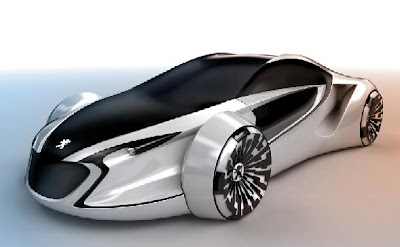 Maybe it’s time to stop fighting the old image and to see it as a virtue. best picture car in the future concept.
Maybe it’s time to stop fighting the old image and to see it as a virtue. best picture car in the future concept.Writen By :
About Steve Cropley
Road tester of 35 years and columnist of 15, Steve says he’s as much in love with cars today as he was on day one. “And not just the cars, but also the industry that makes ’em.”



Subscribe to:
Comments (Atom)












 New Kawazaki Auto Bike 115 cc.
New Kawazaki Auto Bike 115 cc.



